Muslim enclave forged in apartheid now faces gentrification
Places in Cape Town are losing character, with wealthy people coming in from abroad and buying properties
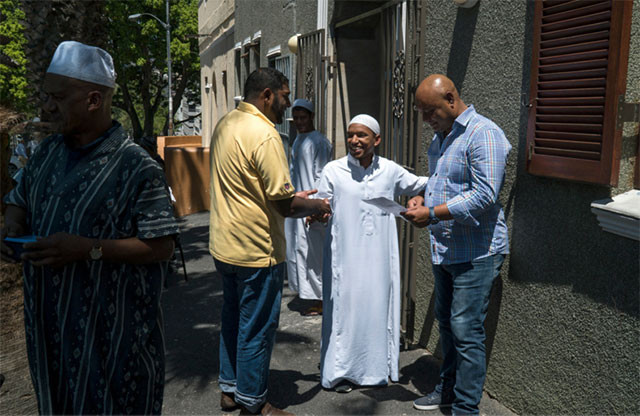
In the days when everyone in the neighbourhood celebrated Muslim holidays, Mogamat Khan Salie would take almost two hours to walk the three blocks from the mosque to his home.
He lingered at every house along the way, exchanging greetings, inquiring about relatives and accepting well-wishes and good food, as he sauntered through the narrow, cobblestone streets of the Bo-Kaap, a neighbourhood that, in a quirk of South Africa‘s apartheid history, was preserved as an ethnic enclave in this otherwise white city.
Preserving immigrant Islam
“Now, it takes me 15 minutes to get to my house,” Salie, 59, said. “At the end of the day, there are no more Muslim people staying in our area. Our culture, our heritage, is going down the drain.”
Most of the residents of the Bo-Kaap are still Muslim South Africans, descendants of slaves brought here from other African nations, India, Indonesia and Malaysia who became known over the centuries as Cape Malays, or Cape Muslims.
Salie’s words reflect profound fears here that their culture and identity, often overlooked in a country defined by the cleavages between black and white South Africans, will eventually disappear because of the neighbourhood’s transformation.
The Bo-Kaap — home to the first mosque in South Africa and considered the birthplace of Islam in this part of Africa — was designated a Cape Malay neighbourhood during the apartheid era. Strict laws against the mixing of races resulted in the preservation of the Bo-Kaap and its culture.
Like the rest of the country, the Bo-Kaap, which means Top Cape, has been changing since the end of apartheid in 1994. White South Africans and foreigners, attracted to its location in central Cape Town — an urban lifestyle tinged with exoticism, brightly colored Cape Dutch houses, dramatic views of Table Mountain and comparatively cheaper real estate — have recently been buying up property.
Some longtime residents have sold willingly and moved to the suburbs for larger homes with pools and garages. Others, unable to pay the rising property taxes, have left under unhappy circumstances.
 The Bo-Kaap Mosque, which was funded by Saudi Arabia. PHOTO: JOAO SILVA/ THE NEW YORK TIMES
The Bo-Kaap Mosque, which was funded by Saudi Arabia. PHOTO: JOAO SILVA/ THE NEW YORK TIMESThe Bo-Kaap’s post-apartheid transformation follows a familiar pattern of gentrification in this city. After an initial period of decay, Cape Town’s urban core has been revived as a center for business and tourism.
Remembering the golden age of Islam
Cape Town is the only major city in South Africa to have successfully managed the transition from the apartheid era, said Nico Kotze, an urban geographer at the University of Johannesburg who has studied the city, including the Bo-Kaap, for the past two decades. By contrast, Johannesburg and other cities have never recovered from the flight of white South Africans and the emergence of new suburban centers.
Still, Cape Town’s success has led to the displacement of its lower-income residents.
“A lot of places are changing in Cape Town and losing their character, with extremely wealthy people coming into Cape Town from abroad and buying properties,” Kotze said.
Perhaps nowhere are the changes as striking as in the Bo-Kaap.
Ziyaad Davids, 26, grew up in the Bo-Kaap and lives in a bright orange house with his parents. The family moved away for a while, renting out the house while living in a suburb. But the Davidses returned to the Bo-Kaap because they found themselves alienated in the suburb, even though it was a predominantly Cape Malay area.
“We’d come outside and see the neighbour, and he looks at you,” Davids said. “He looks past you.”
In the Bo-Kaap, he added, the neighbourhood was an extension of one’s home, a place where people conversed and felt no shame in asking a neighbour for some coffee if caught short.
Most newcomers were respectful of the Bo-Kaap’s Cape Malay identity, he said. But some were not: They drank in public or complained about the calls to prayer. Others, he said, would pose in front of the mosques in revealing clothes.
Anne Gonschorek, a German journalist, has lived in the Bo-Kaap for 18 months. She and three other tenants share a purple house owned by a European woman. Gonschorek, who pays $330 a month in rent, was drawn to the neighbourhood’s “exotic feel.”
What a newly dated early Quran tells us about Islam
“Otherwise, Cape Town is very European, very westernised, definitely not Africa as you would imagine it,” she said.
Even so, she found that at least one custom made her uneasy. She said that people tend to gather on sidewalks, often milling around random doorsteps. Returning home late at night, Gonschorek encountered young men sitting on her doorstep.
“Can you please not sit right at my entrance?” Gonschorek recalled asking. “And then they will say, ‘This is our Bo-Kaap.’ ”
The Auwal Mosque, South Africa’s first, was established in the Bo-Kaap in the late 18th century. Islam was introduced to South Africa from Indonesia at a time when the Dutch controlled both countries.
As a result, slaves brought here by the Dutch from different continents began practicing Islam according to Indonesian traditions. They also adopted Indonesian expressions in their daily lives and developed a cuisine with Southeast Asian influences, said Suleman Essop Dangor, a scholar on Islam in South Africa.
The Muslim world at the crossroads
In the 1960s, as the apartheid government segregated the country’s population by race, it transformed cities into exclusive zones for white South Africans. Nonwhites were evicted from all of Cape Town’s neighbourhoods — except the Bo-Kaap.
The neighbourhood had been saved, Kotze said, because of an unusual champion: I D du Plessis, a government official who wrote about Cape Malay culture. Du Plessis, who was white and died in 1981, had pressed for years for the preservation of the Bo-Kaap as a Cape Malay quarter, a move that was in keeping with the apartheid government’s policy of creating separate spaces for each racial or ethnic group.
 PHOTO: THE NEW YORK TIMES
PHOTO: THE NEW YORK TIMESSo segregated was the Bo-Kaap that Fuad Moos, 25, remembers seeing only Cape Malay residents while growing up.
“White people could never walk around this site, just like that,” he said, pointing to a group of white tourists walking up the neighbourhood’s main street.
Today, outsiders own about 15 per cent of the 1,100 residences in the Bo-Kaap, said Osman Shaboodien, the chairman of the Bo-Kaap Civic Association. His group is working to retain the neighbourhood’s original identity by helping longtime residents take in lodgers so that they can pay the rising property taxes and by encouraging the sale of houses to other locals.
If you think the niqab is a choice, think again
But change was coming from many directions, not only gentrification, Shaboodien said.
In the past two decades, Muslim leaders in the Bo-Kaap and elsewhere in the country have developed growing ties with Saudi Arabia, which has offered scholarships and other assistance to spread its version of Islam throughout the world. In the Bo-Kaap’s mosques, practices rooted in Southeast Asia have given way to a version of Islam from the Middle East.
Longstanding traditions among the Muslims here — like visits to famous burial sites and a ceremony involving the striking of swords and daggers — are frowned upon by those who have studied in Saudi Arabia.
Yusuf Larney, 61, the owner of a Cape Malay restaurant called Bo-Kaap Kombuis, said that apartheid had kept the community tighter, but had also stunted its growth. The freedom of post-apartheid South Africa, he said, had opened up the world to residents even as it ushered a new world into the neighbourhood.
“You cannot prevent people from outside this community — if they want to buy here — you can’t prevent that, because then you want to start another apartheid,” Larney said. “It’s tit for tat.”
This article originally appeared on The New York Times, a partner of The Express Tribune

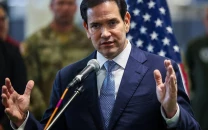
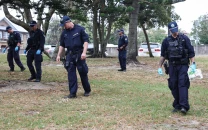
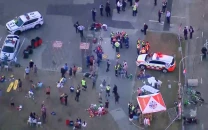
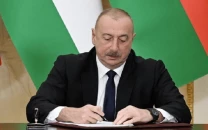
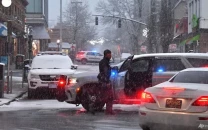
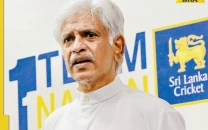












COMMENTS
Comments are moderated and generally will be posted if they are on-topic and not abusive.
For more information, please see our Comments FAQ